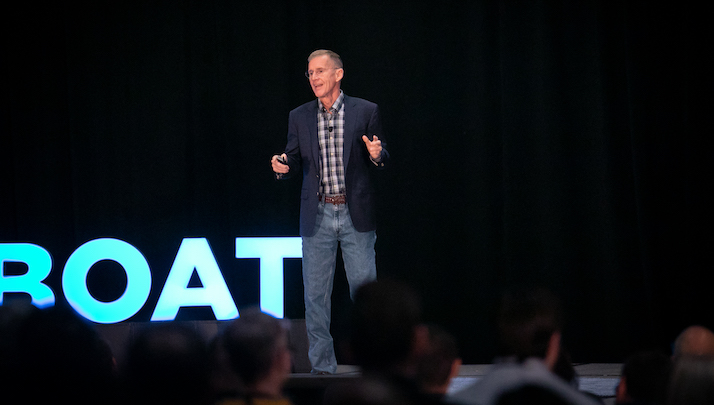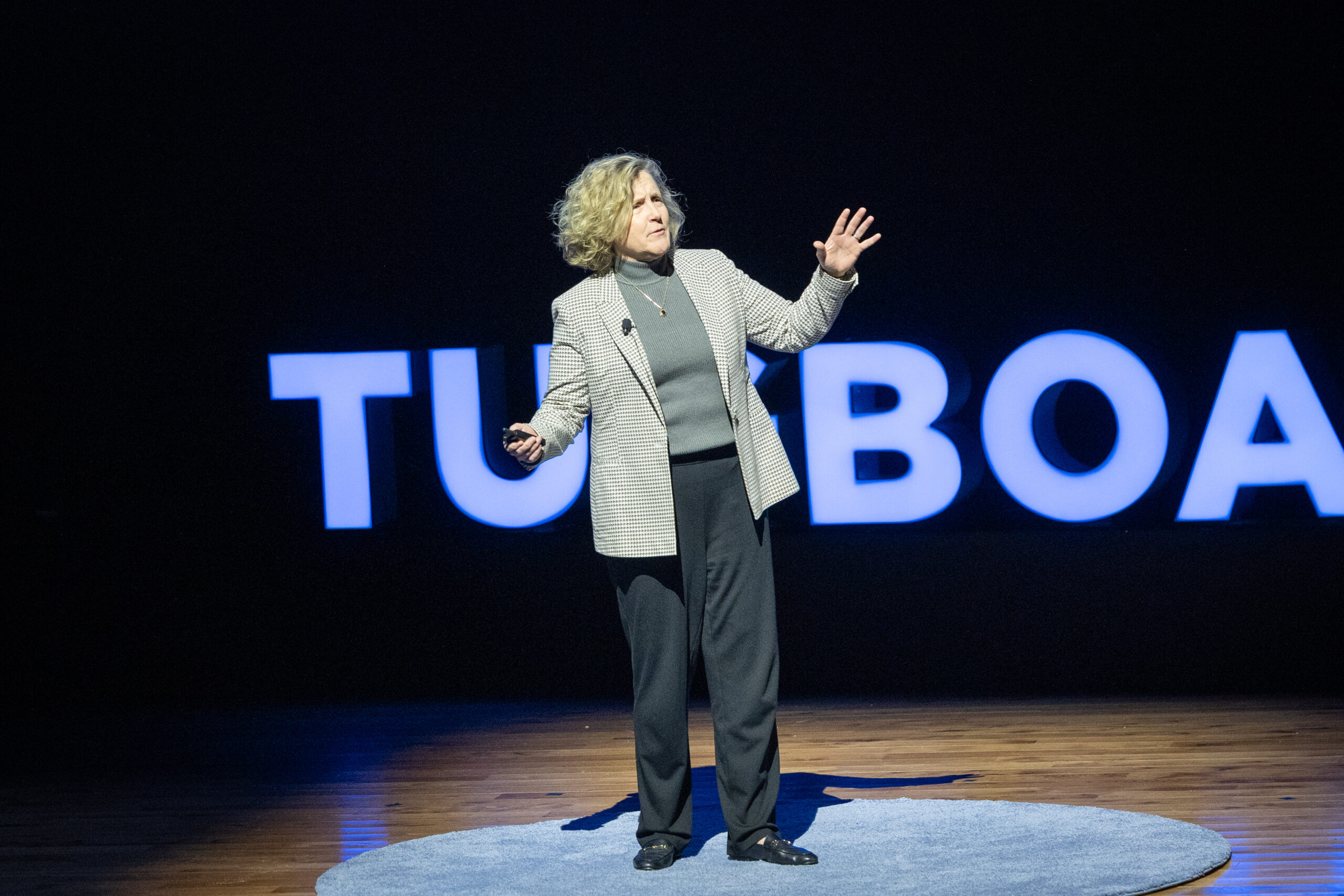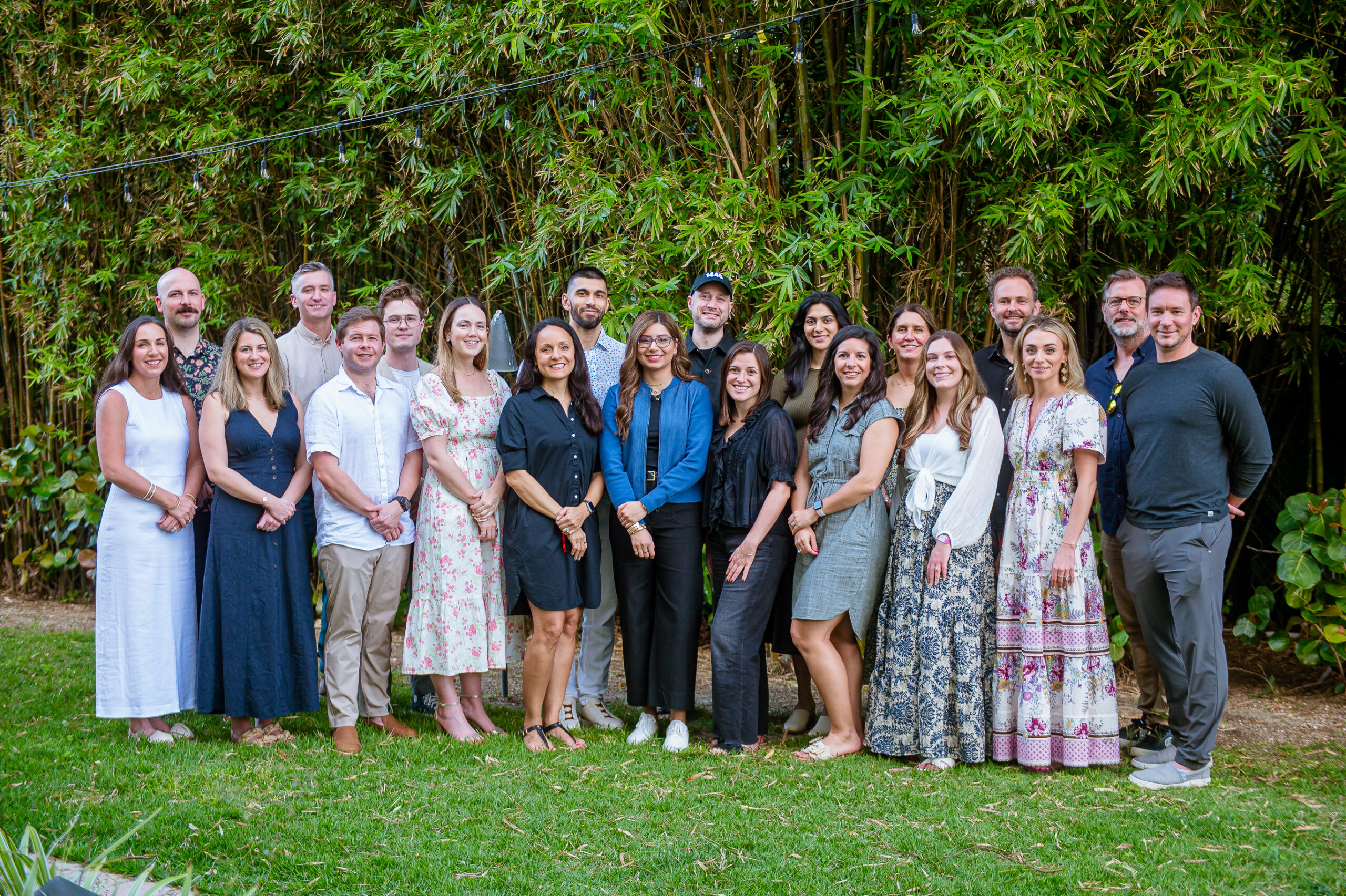

Organizational Adaptability in the 21st Century
- General (Ret) Stanley McChrystal
- McChrystal Group
NOTE: This Evergreen Journal article is adapted from General Stanley McChrystal’s presentation at the inaugural Tugboat Institute Gathering of Teams in February 2020. General McChrystal’s message of adaptability and innovation in the face of challenge is inspiring, and we feel it is especially relevant in the wake of the COVID-19 pandemic.
Nine-and-a-half years ago, when I left the military, I started a company, McChrystal Group. I had no investors (I still don’t) and no business plan. Today, we’ve grown to about 100 people. It hasn’t been an easy road. As Evergreen® business leaders know, building a business can be tough. There are times when you find yourself hanging on by your fingertips. When that has happened along the way, people have asked me, “Why don’t you just sell it?” My answer: My purpose is my people. That’s what I’m about; that’s what keeps me interested.
That interest in people fuels the work we do at our company, and it’s paired with an abiding fascination I have with how organizations are run. Today, much of the focus in businesses is on efficiency. While efficiency was essential in leading organizations through the industrial revolution to achieve greater productivity, what is actually most important today is adaptability.
I didn’t come to this conclusion through academic study but through personal experience. I’d been in the Army many years, when in 2003 I was named to command Joint Special Operations Command, or JSOC. Created in 1981, JSOC is a subset of our special operating forces focused on counter-terrorist operations, hostage rescue, aircraft hijacking, and very precise raids. It’s composed of specialized units for those missions: Delta Force, SEAL Team Six, and the Rangers, to name a couple.
I was a Major General at the time of my appointment, and I’d grown up in JSOC. From the earliest years, the organization ran successful missions, including in Grenada, Panama, the first Gulf War, and, after 9/11, just about all the high-profile operations you’ve heard of—and many you haven’t.
But for the first 22 years of our history, the organization was not pressure tested. From 1981 to 2003, all of the operations were pretty narrow in time and scope, and we could accomplish the missions with subsets of the organization. We hadn’t had the opportunity to find out where the weaknesses were—though, we sort of intuitively knew they were there. If you scraped the surface of this organization, the dirty little secret was that Delta Force didn’t like the SEALs very much. The SEALs hated Delta. Both of them looked down at the Rangers, and nobody wanted to talk to the aviators. So, the reality was, instead of being this incredible synergistic team of teams, JSOC was a tribe of tribes. Each tribe had strong pride and cohesion, but they were insular in nature.
In the fall of 2003, just after I was appointed, we were presented with our pressure test. We’d been in Iraq for about six months, and suddenly it started to get really ugly. Al-Qaeda in Iraq, which emerged in 2003, was a very different organization than the Al-Qaeda terrorist network with which we were familiar. Where the Al-Qaeda we knew had operated with an organizational chart that, surprisingly, you might say looked a lot like General Motors—led by a strong founder at the top and operated in a careful, precise (and therefore often slow and methodical), and disciplined way—this new organization had completely different DNA than its predecessor. They weren’t slow at all; they were wickedly fast, and if they did an operation in Mosul and they learned lessons, they applied those lessons to another operation down in Baghdad the next day.
To combat this new organization, I had unequivocally the best counter-terrorist force in the world. If you looked at the force I commanded, you’d see just what you might expect from the way these Commandos are portrayed on TV and in the movies—bearded, muscled, arrogant, and, compared with traditional troops, non-standard. But scratch the surface and you’d say, again, “Wait a minute, this organization looks like General Motors.” And you would have been right. We were a big, bureaucratic structure designed in a military culture to be efficient and to operate predictably, and we reflected that. It had always been fine.
But this structure didn’t work well when faced with Al-Qaeda in Iraq. The reason: cell phones. In 1988 when Al-Qaeda was formed, nobody had cell phones, and nobody had access to the internet. In 2003, when Al-Qaeda in Iraq emerged, everybody did. Every Iraqi had at least one cell phone and access to the internet, and it gave the new organization a completely different character and set of capabilities.
We had spent billions of dollars on proprietary systems to communicate, to become and keep ourselves organized; Al Qaeda in Iraq used technology loosely within an organizational structure that melded well with that technology to make themselves extraordinarily effective—quicker than we were, able to focus faster and better than we could. And for about two years, they were defeating us.
When that happens, you have to look inward and do some serious thinking about your organization. When I took over in October 2003, we were doing raids, and we were very good. Our team was well-trained, very well armed, courageous, and committed, and we had success against high-value targets. We were feeling really good about ourselves. But we were only doing about four raids a month, one per week, because it took time to get intelligence, to get focused, and to execute. We captured Saddam Hussein during that period, and President George W. Bush called me personally to thank me and to have me pass on to the command what a great job we were doing. But the reality is that when we looked at the entire spectrum of what was happening in Iraq, and more broadly across the region, it was getting worse rapidly, and we were not moving the needle; we were not making enough of a difference.
First, we blamed everyone else. But if you’re on a losing team, you’re on a losing team. So, next, as a new commander, a couple of months in, I said, “Okay, well, we have to do more: We have to push harder and get faster.” We continued to use our existing process, which funneled every operation up through the established chain-of-command, to me, to approve or not approve. We got up to 18 raids a month, and we were still about 70 percent successful. That means we’re taking 13 or 14 enemy leaders off the battlefield every month.
But then we reached a place where we couldn’t go faster using those existing processes—it just wasn’t possible. We knew we had to operate differently. So, we did something none of us had ever done before—we connected the entire command across 76 different bases spread across the world to create a synchronized, integrated operation on a daily basis. The effect was to create a completely different mindset and mode of operating in the organization, almost like one human brain.
Through the reorganization, we kept the basic structure for all the things it had served well, like finance and logistics, but we changed fundamentally how information moved in real-time and where and how decisions were made. We democratized information drastically, and then we pushed decision-making way down the line. We transitioned from a daily video teleconference every morning for 30 minutes with our rear headquarters at Fort Bragg, North Carolina, and our forward headquarters outside Baghdad, where I was—about 25 people on each end—to a 90-minute video teleconference for 7,500 people a day spread across the world, in different time zones.
You might be horrified at the thought of that a meeting that size—and it was, truly, the mother of all meetings. But it was the most efficient thing I’ve ever seen in my career. Because it wasn’t an order-giving meeting or a report to the command in general, it was a discussion across the command. We were talking about the current situation, how it had changed, what we had learned, and what we needed to do to move forward. Instead of giving orders that would take most of the day to cascade down the chain of command, everyone involved heard the same thing every day and could connect the dots for themselves. We also ran 15 chat rooms during the meeting where people could connect, ask questions, and collaborate about resources and assets.
That fundamental change to the communication structure within our organization—that ability to adapt in the face the new capabilities and structure of Al Qaeda in Iraq—allowed us to turn the tide.
So how is that applicable to business? I’ve now been out over nine years, and I’m shocked by how similar war and business are. It’s amazing. The people who are good at war, who understand camaraderie and commitment and all the values that you represent, typically are pretty comfortable in business, and the people who you wouldn’t want to work with in war are the same people you don’t want to work with in business. And, in the same way that our priority in Iraq was to first understand the new landscape, any business leader will first need to understand their market, their competition. But more important, as we learned, is to look inward first and understand your own organization and yourself as a leader and an individual. How will you be able to respond to a pressure test? If you scratch the surface, what weakness might be the thing that will hold you back? How are you communicating and leading within the structure or your organization? It’s from that place of understanding that you will be able to adapt and turn the tide in whatever challenge you are facing today.
General (Ret) Stanley McChrystal is Founder and CEO of McChrystal Group. He the former commander of US and International Security Assistance Forces (ISAF) Afghanistan and the former commander of the nation’s premier military counter-terrorism force, Joint Special Operations Command (JSOC).
More Articles and Videos

Both/And Thinking: Harnessing the Positive Potential of Tensions
- Marianne Lewis
- Carl L. Linder College of Business, University of Cincinnati

Leading Through Uncertainty – Tugboat Institute® Summit 2025
- Jackie Hawkins
- Tugboat Institute

Get Evergreen insight and wisdom delivered to your inbox every week
By signing up, you understand and agree that we will store, process and manage your personal information according to our Privacy Policy




